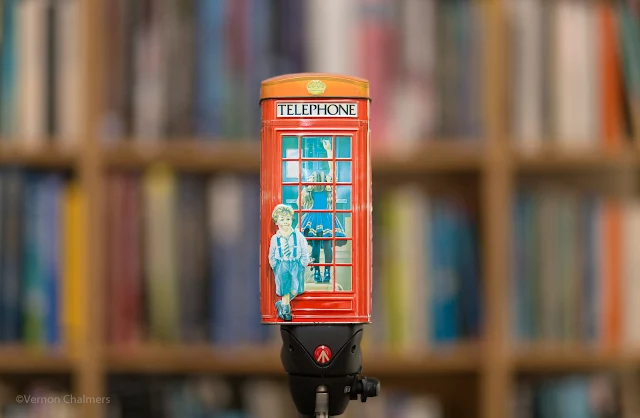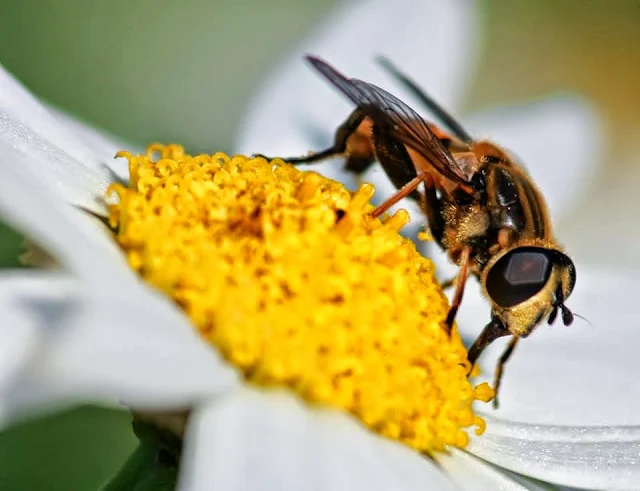What is Noise in Photography? : Digital Noise versus Background Blur
 |
| Difference between Digital Noise and Background Blur |
All about the background in the image
Blur can really mean different things in digital photography, but should not to be confused with unwanted graininess or digital noise across a digitally created image. Unwanted noise generally occurs when:
- shooting in low light, when a digital camera's ISO setting is too high
- shooting within the digital zoom range of a compact camera
- over-cropping an image
Unwanted blur
Out-of-focus blurred area(s) in an image that came about via unintentional camera movement, unwanted subject movement and / or wrong shutter speed settings when photographing movement - something you don't really want.
Deliberate blur
This will appear in areas of the image when the photographer attempts to blur certain areas of a composition / image. With foreground in focus, but the background deliberately blurred depending on the Depth Of Field (DOF) - distance between nearest and farthest object(s) of the composition / framing requirements ie. when isolating a flower from its immediate surroundings.
Deep vs Shallow Depth-Of-Field (DOF)
With a deep DOF more of the entire image will be in focus and its more likely to be used in Landscape Photography with smaller apertures of i.e. f/11 - f16. With shallow DOF specific area(s) of an image is deliberately out of focus and can be applied in a variety of genres (Wildlife / Sport / Macro / Portraits) where the photographer deliberately wants to separate the main subject from the background - for this effect, larger apertures will be applied i.e.. f/1.8 - 5.6.
DOF Aperture Test: Canon EOS 6D / EF 50mm f/1.8 STM lens - view>>
DOF flower series demonstration with Canon EOS 700D / EF-S 55-250 IS II lens - view>>
Depth of Field for Beginners: The Essential Guide >>
Bokeh: visual quality of the blur...The visual quality of [deliberate] blur is also referred to as Bokeh - Japanese for the out-of-focus aesthetic quality of the deliberate out-of-focus (blurred) area. a Wide aperture of i.e. f/1.8 - f/5.6 or so will be used (depending on the lens / optical distance from subject) to create the required out-of-focus effect.
See attached images below: white rose bud, the yellow rose and red rose bud with sharp / in-focus foreground sharp and background deliberately blurred (using wide apertures of f/5.8 and f/5.6).
Lens apertures
In DSLR photography different lenses are used to create / select different levels of DOF depending on the lens aperture range, optical length of the lens and distance from subject. Different lenses / aperture settings will be applied for different type of photography genres requiring blur effects at various focal lengths ie. for close-up / macro, portraiture or wildlife photography. a DSLR camera system is not necessarily required for creating deliberate image blur, a compact camera with a wide aperture lens with some optical zoom will also work.
The images below were captured with apertures of f5.6 Yellow Rose (Non-DSLR Canon PowerShot SX40 HS with its f/2.7 - 5.8 35x telephoto zoom lens) and f/5.6 Red Rose Bud (EOS 700D / EF-S 18-135mm f/3.5 - 5.6 IS STM lens / EF-S 55-250mm f/4 - 5.6 IS II lens).
Which Canon lenses?
Desired Bokeh-effects for close-up or macro flower photography can be achieved with a variety of lenses with wide apertures i.e. with fix aperture lenses such as Canon EF-S 60mm f/2.8 Macro USM or the EF 100mm f2.9 Macro USM prime lenses.
Any Canon DSLR camera body with either an EF or EF-S lens (or other compatible lenses) attached will generate deliberate background / selected blur, but the Bokeh quality will depend on the following factors:
Different lighting conditions
In all the images the objective was to keep the 'unwanted digital noise' across the frame as low as possible. For the "Yellow Rose' image, shot with Canon PowerShot SX40 HS, I used ISO 100 (in crisp early morning sun light) and the 'Red Rose Bud', shot with the Canon EOS 700D, I used ISO 400 with a Speedlite 430 EX II flash (in early morning overcast / raining conditions).
Photographers use blur for various shallow depth-of-field / artistic effects (image on the right - 'blue flower' and first image below - 'red mailbox' with Canon EOS 6D both at an aperture of f/2.8 with Canon EF 50mm f/1.8 STM lens.
Last image 'bee on flower' was captured with Canon EOS 700D / 55-250mm IS II lens and Canon 500D close-up lens filter), Bee in focus, most of the flower blurred / out of focus, in a deliberate, aperture-controlled and planned way.
Optimal exposure settings
Just to come back to noise - you may have noticed that many of my own photos are not always shot in good lighting conditions. Most of my low light / long exposure DSLR photography shoots are done in Av mode, ISO 100 and apertures between f/16 - f/22 generating automatic shutter speeds of between 1 and 30 seconds.
I often use the camera's Manual shooting mode with similar aperture settings and Bulb Mode - the ability to have manual time control over shutter speeds during every single shot. A time to use this mode is when shooting fireworks. These exposure combinations together with the use of a tripod and RC-6 remote shutter release, almost entirely limits all unwanted noise / graininess and unwanted blur. © Vernon Chalmers
Flower Close-Up Image : Canon 70-300mm Lens (with Extension Tube)
See attached images below: white rose bud, the yellow rose and red rose bud with sharp / in-focus foreground sharp and background deliberately blurred (using wide apertures of f/5.8 and f/5.6).
Lens apertures
In DSLR photography different lenses are used to create / select different levels of DOF depending on the lens aperture range, optical length of the lens and distance from subject. Different lenses / aperture settings will be applied for different type of photography genres requiring blur effects at various focal lengths ie. for close-up / macro, portraiture or wildlife photography. a DSLR camera system is not necessarily required for creating deliberate image blur, a compact camera with a wide aperture lens with some optical zoom will also work.
The images below were captured with apertures of f5.6 Yellow Rose (Non-DSLR Canon PowerShot SX40 HS with its f/2.7 - 5.8 35x telephoto zoom lens) and f/5.6 Red Rose Bud (EOS 700D / EF-S 18-135mm f/3.5 - 5.6 IS STM lens / EF-S 55-250mm f/4 - 5.6 IS II lens).
 |
| Canon 6D / EF 70-300mm f/4.6-6.5L IS USM Lens with Extension Tube |
Desired Bokeh-effects for close-up or macro flower photography can be achieved with a variety of lenses with wide apertures i.e. with fix aperture lenses such as Canon EF-S 60mm f/2.8 Macro USM or the EF 100mm f2.9 Macro USM prime lenses.
Any Canon DSLR camera body with either an EF or EF-S lens (or other compatible lenses) attached will generate deliberate background / selected blur, but the Bokeh quality will depend on the following factors:
- Aperture settings (wider is better)
- Type of EF / EF-S lens (design and optical length)
- Depth of field of objects in the frame
- Distance to subject / lighting conditions
- Accessories used (extension tubes / close-up filters)
Different lighting conditions
In all the images the objective was to keep the 'unwanted digital noise' across the frame as low as possible. For the "Yellow Rose' image, shot with Canon PowerShot SX40 HS, I used ISO 100 (in crisp early morning sun light) and the 'Red Rose Bud', shot with the Canon EOS 700D, I used ISO 400 with a Speedlite 430 EX II flash (in early morning overcast / raining conditions).
Flower Image with Canon EOS 6D / 50mm Lens
Last image 'bee on flower' was captured with Canon EOS 700D / 55-250mm IS II lens and Canon 500D close-up lens filter), Bee in focus, most of the flower blurred / out of focus, in a deliberate, aperture-controlled and planned way.
Optimal exposure settings
Just to come back to noise - you may have noticed that many of my own photos are not always shot in good lighting conditions. Most of my low light / long exposure DSLR photography shoots are done in Av mode, ISO 100 and apertures between f/16 - f/22 generating automatic shutter speeds of between 1 and 30 seconds.
I often use the camera's Manual shooting mode with similar aperture settings and Bulb Mode - the ability to have manual time control over shutter speeds during every single shot. A time to use this mode is when shooting fireworks. These exposure combinations together with the use of a tripod and RC-6 remote shutter release, almost entirely limits all unwanted noise / graininess and unwanted blur. © Vernon Chalmers
Difference between Digital Noise and Background Blur
"Digital noise and background blur are two distinct phenomena in photography, often associated with different aspects of image quality and visual aesthetics:
1. Digital Noise
Digital noise refers to the random variations in brightness or color within an image captured by a digital camera, which can give the appearance of grain or speckles. It's particularly noticeable in low-light conditions or when using high ISO settings. It occurs due to the electronic signal amplification necessary to capture images in low-light situations. Higher ISO settings amplify the signal, resulting in a greater presence of noise in the final image. This noise can degrade image quality by reducing sharpness and clarity.
Digital noise refers to the random variations in brightness or color within an image captured by a digital camera, which can give the appearance of grain or speckles. It's particularly noticeable in low-light conditions or when using high ISO settings. It occurs due to the electronic signal amplification necessary to capture images in low-light situations. Higher ISO settings amplify the signal, resulting in a greater presence of noise in the final image. This noise can degrade image quality by reducing sharpness and clarity.
2. Background Blur
Background blur, often referred to as bokeh, is the aesthetic effect where the background of an image appears out of focus, while the main subject remains in sharp focus. This effect is achieved through a shallow depth of field, typically by using a wide aperture. The result is a pleasing separation between the subject and the background, drawing attention to the main subject by blurring distractions in the background. This technique is commonly used in portrait photography or to isolate a subject in various photographic compositions.
In summary, digital noise is an unwanted interference that can degrade image quality, caused by factors like low light or high ISO settings. In contrast, background blur is an intentional creative technique that enhances the visual appeal of an image by selectively blurring the background to emphasize the subject." (Source: ChatGPT 2023)
 |
| Canon EOS 6D / EF 50mm f/1.8 STM Lens flash |
Canon EOS 700D ISO 100 f/5.6 No Flash
 |
Canon PowerShot SX40 HS ISO 100 f/5.8 (Non-DSLR Compact Camera)
Canon EOS 700D ISO 400 f/5.6 Flash
Canon EOS 700D ISO 100 f/5.6 No Flash
More Depth Of Field (DOF) Examples: DSLR / Non-DSLR / More Bee On Flower with Close-Up Filter |
![The visual quality of [deliberate] blur is also referred to as Bokeh The visual quality of [deliberate] blur is also referred to as Bokeh](https://blogger.googleusercontent.com/img/b/R29vZ2xl/AVvXsEi-Jv1ahvsqQJNHBKNzMMPXaIL9UpnsqKYHD5Zwea3hcWA_ippawMZG2TBiqfYgeJZoX7RCtayzQsZ71rcx29idN8Q9vB1WMk7ZYQBVkgoAgQ-b0mLi90rGBu0cZZ1Dm8oV74pJnYA9Ers/w640-h426-rw/300mm.jpg)



